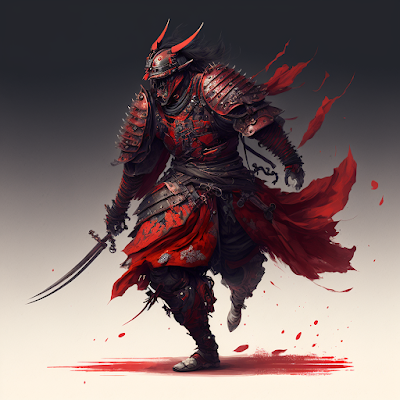I've been quietly obsessed with all things Samurai lately, and have been generating a lot of images on this theme.
The samurai class in feudal Japan, also known as bushi, were members of the military nobility in pre-industrial Japan. They were the elite warrior class that served the daimyos (feudal lords) and the shogun (military dictator) during the period of Japanese history known as the Feudal Era (1185-1868). The samurai were known for their strict code of conduct, known as bushido, which emphasized loyalty, courage, and honor.
The samurai were well-educated and were expected to be proficient in both martial arts and literary arts. They were also expected to be knowledgeable in the Chinese classics and Confucianism, which were considered the foundation of their education. Samurai were not only warriors but also administrators, they were responsible for governing the territories they were given by their daimyos or shogun.
Samurai were considered members of the upper class and were granted privileges such as the right to bear arms and to own land. They were also given stipends by their lords and were expected to provide military service in times of war. In return for these privileges, the samurai were expected to be loyal to their lords and to defend their territories.
The samurai class was abolished in 1868 after the Meiji Restoration, which marked the end of the Feudal Era in Japan and the beginning of a new period of modernization and westernization. However, the legacy of the samurai lives on in modern Japanese culture, where the ideals of bushido and the samurai code of conduct are still revered and admired.








